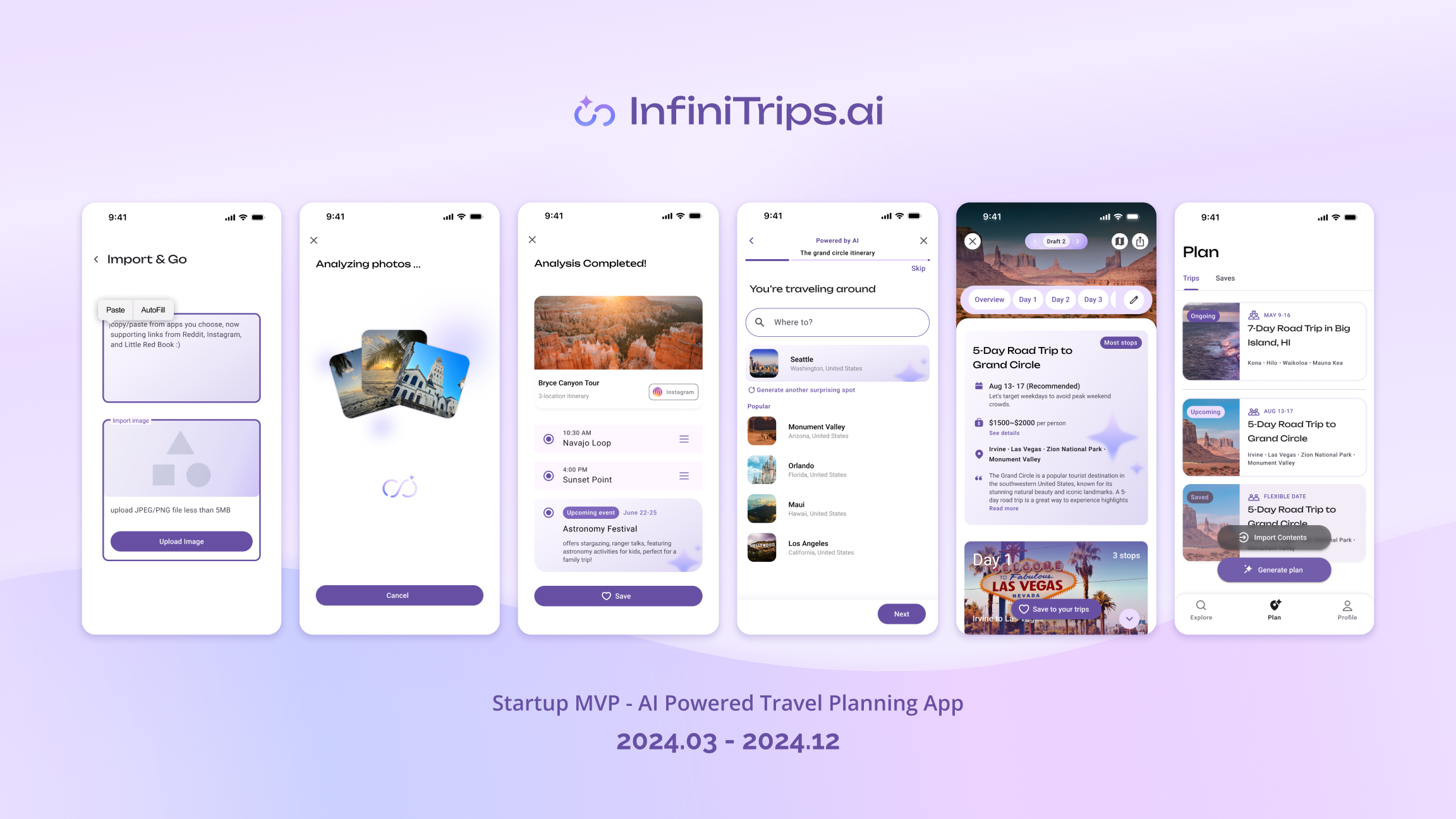

InfiniTrips was an AI travel planning app designed to help travelers turn inspiration into structured itineraries. I led the design process to build a MVP, which was demoed to investors, but based on product and market insights, our team made the strategic decision to sunset this direction.
This case study focuses on how design shaped that decision—and what I learned about building (and unbuilding) AI-powered experiences.
Half year ( March 2024 - Dec 2024)
Claire Li (CEO)
Sam Xu (CTO)
Zhuoyu Li (Co-Founder/Designer)
Trip planning today is chaotic. Users bounce between TikTok, Reddit, Google Maps, and Notion—burning 20–30 hours stitching together ideas, prices, and logistics.
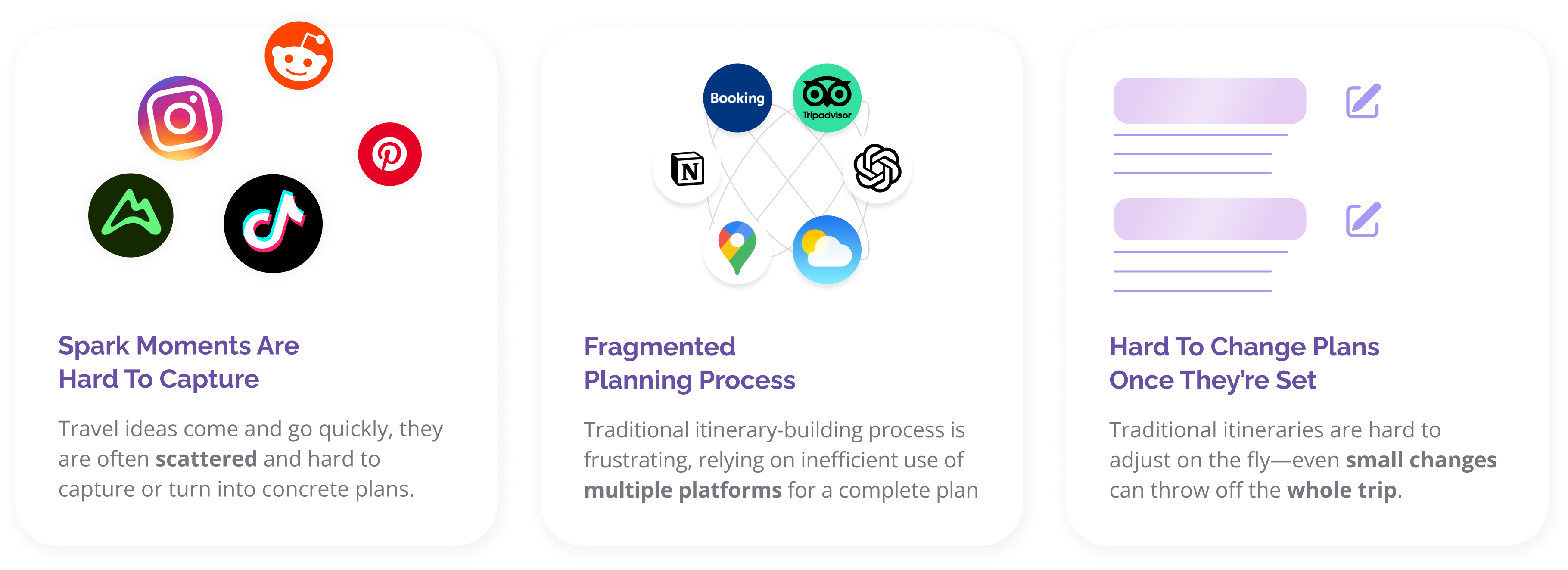
As a product designer, my goal was to build the right product that user need and feasible to develop. I focused on validating whether AI could effectively support the trip planning journey.


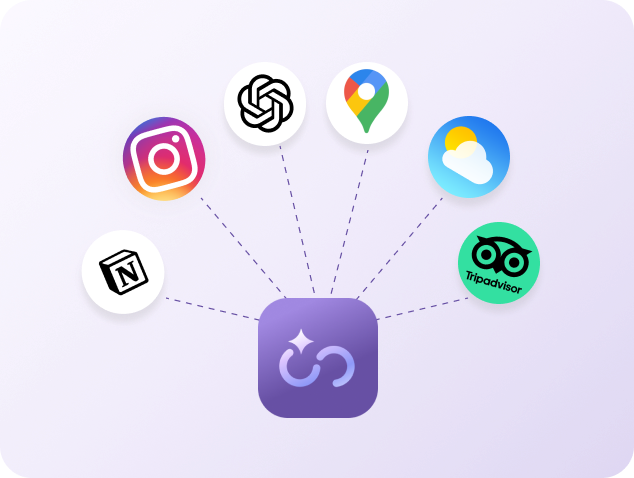
How can AI turn inspiration input into itineraries?
Travelers often save IG posts, screenshots or Tiktok videos—but these are unstructured. Can AI extract useful details to generate itineraries?
How do we optimize overwhelming AI output?
Raw AI results are always overwhelming or too generic. The output could be a clear, trustworthy, and actionable interface through our design.
How do we keep user from bouncing back between apps?
Trip planning is usually non-linear. Our goal is to design a seamless flow—reduce friction and merge inspiration, research and plan all in one place.
What I Built:
Complete Trip Planning Prototype
I mapped the full journey — explore location → content import → itinerary generation → editing → sharing
'I feel at ease when viewing recommended trip plans even though I don't have a travel plan'
— One user insight shaped this feature deeply.
We realized that the true value of Explore wasn't utility—it was inspiration. To deliver that, I designed an experience that blends: Striking visuals to spark curiosity, Practical data from Google Maps, Dreamlike stories crafted by users and AI.
A curated feed of destinations and itineraries (UGC + AIGC + data from Google Maps API)
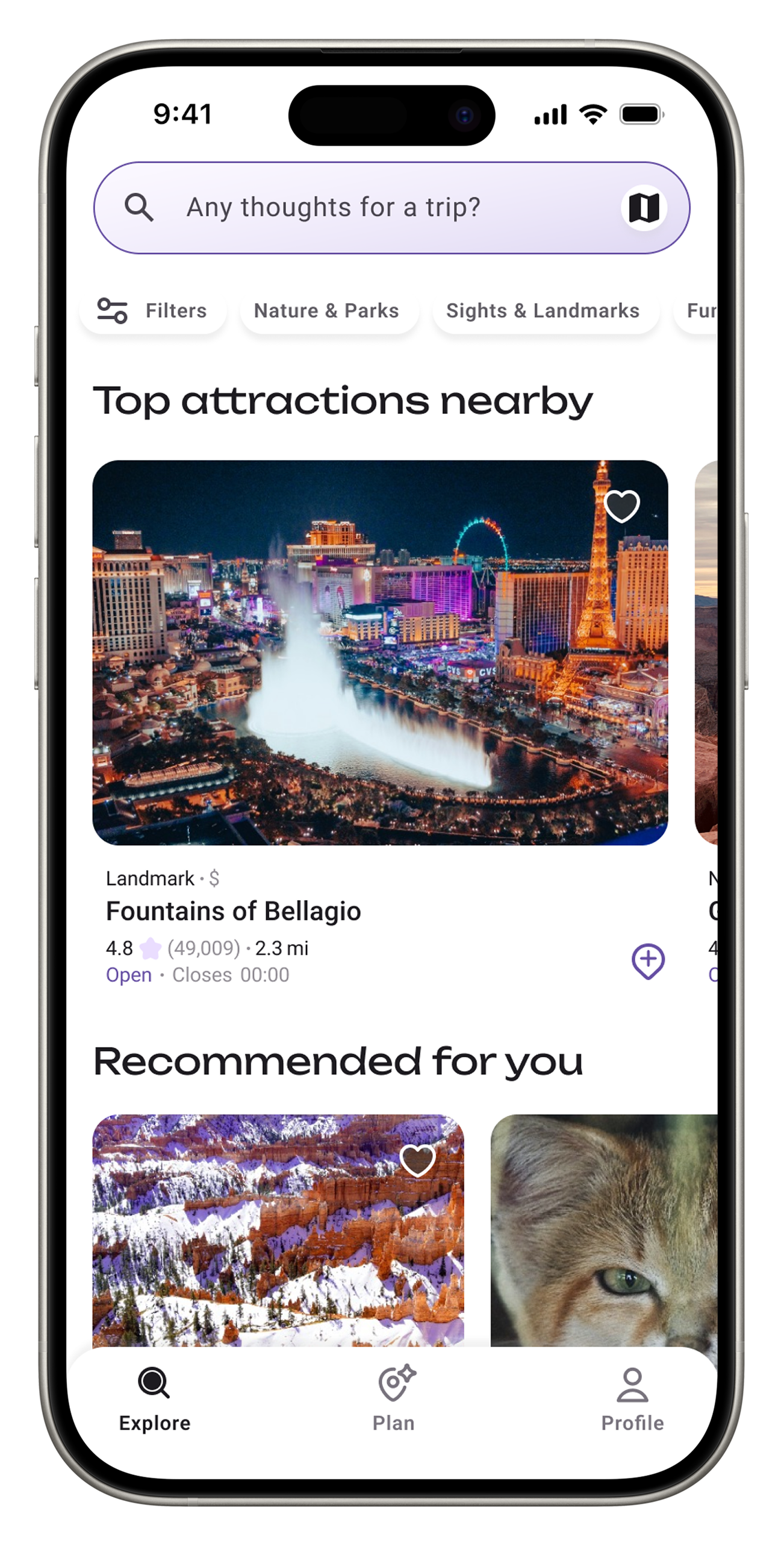
Flexible discovery, whether users know where to go or not - they'll find the answer
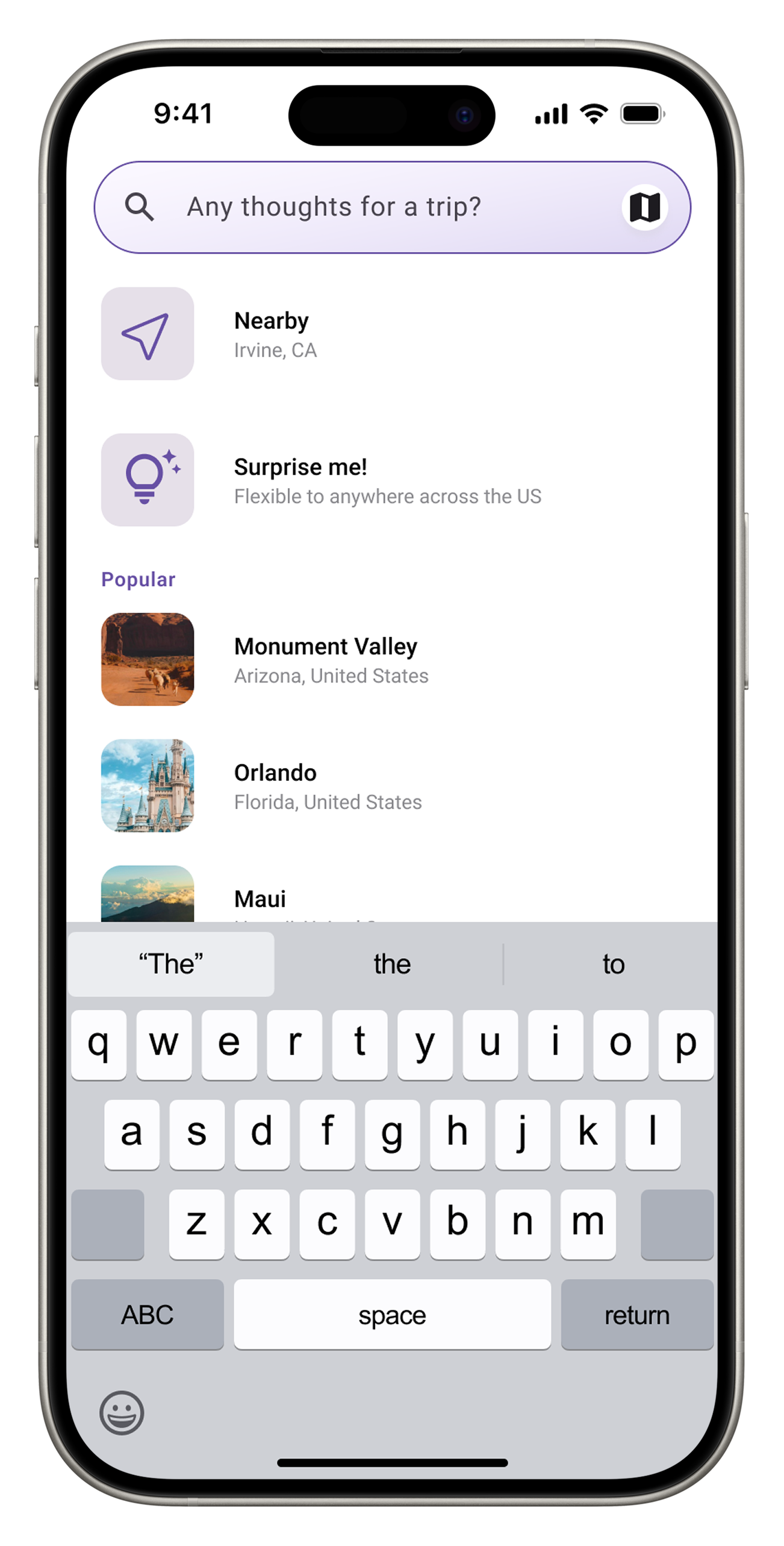
A focused view with essential info, narrative context, and direct access to maps
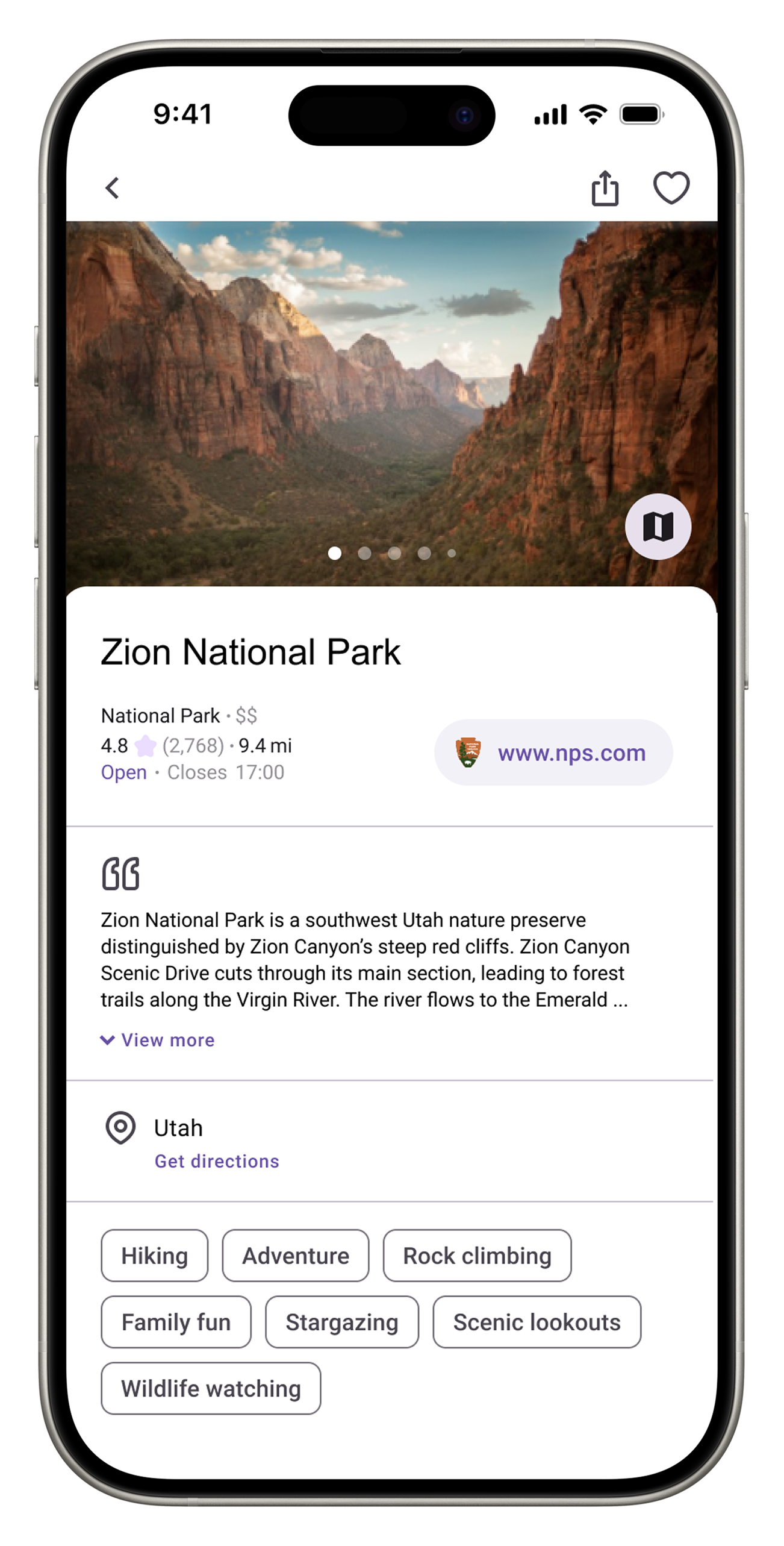
Due to the lack of real users in the early stage, the first page features only AI-generated content. We were also unable to implement behavior-based recommendations as originally planned.
To accommodate modern travelers’ fragmented planning habits, I designed a feature that allows users to import external travel inspirations—whether it's a saved Instagram post, a blog, or a photo from their camera roll—and turn them into structured, editable itineraries.
Users can paste a link or upload a photo. Our system scans the data
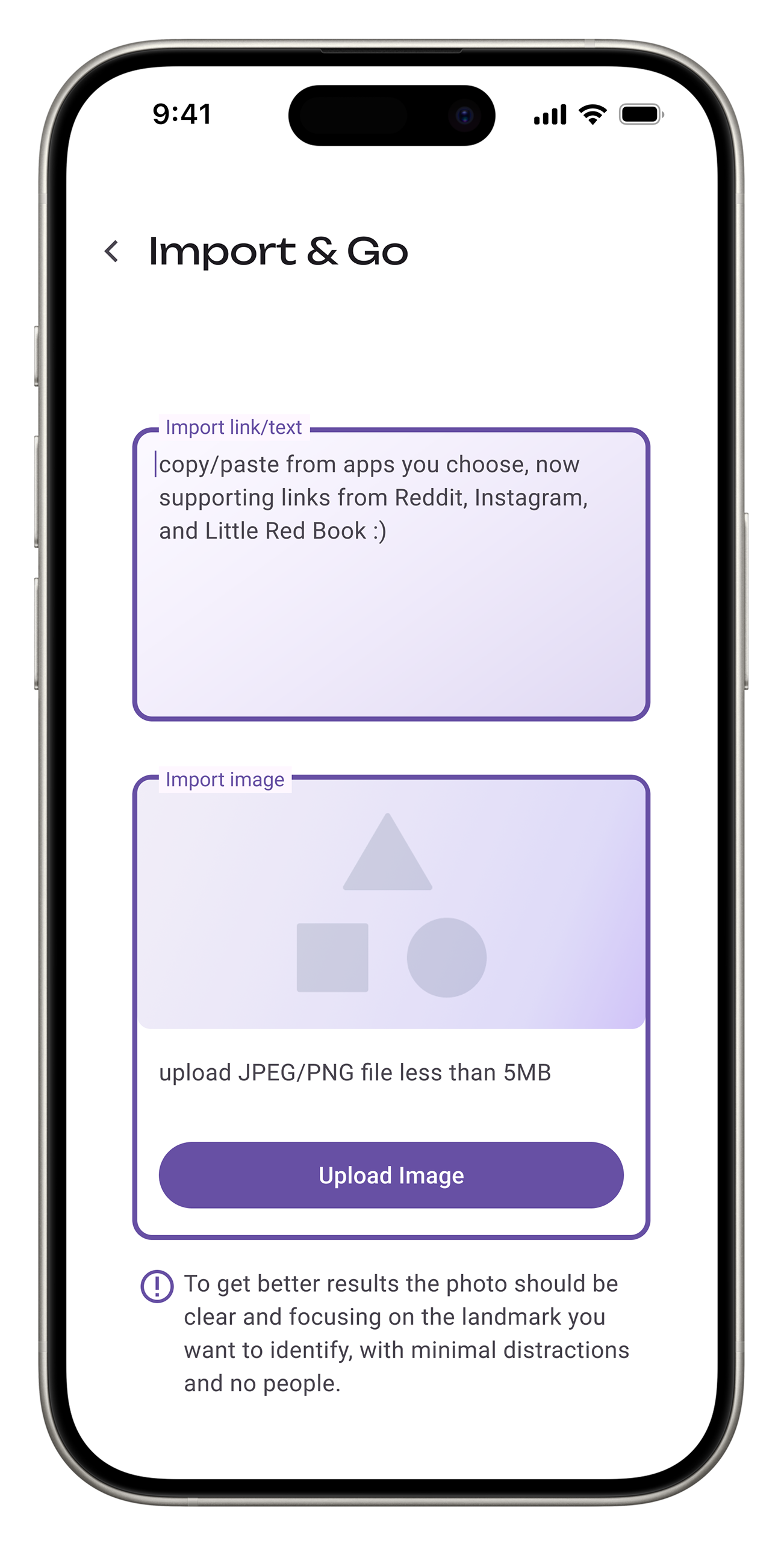
We analyze geolocation data embedded in images to identify destinations and timestamps.
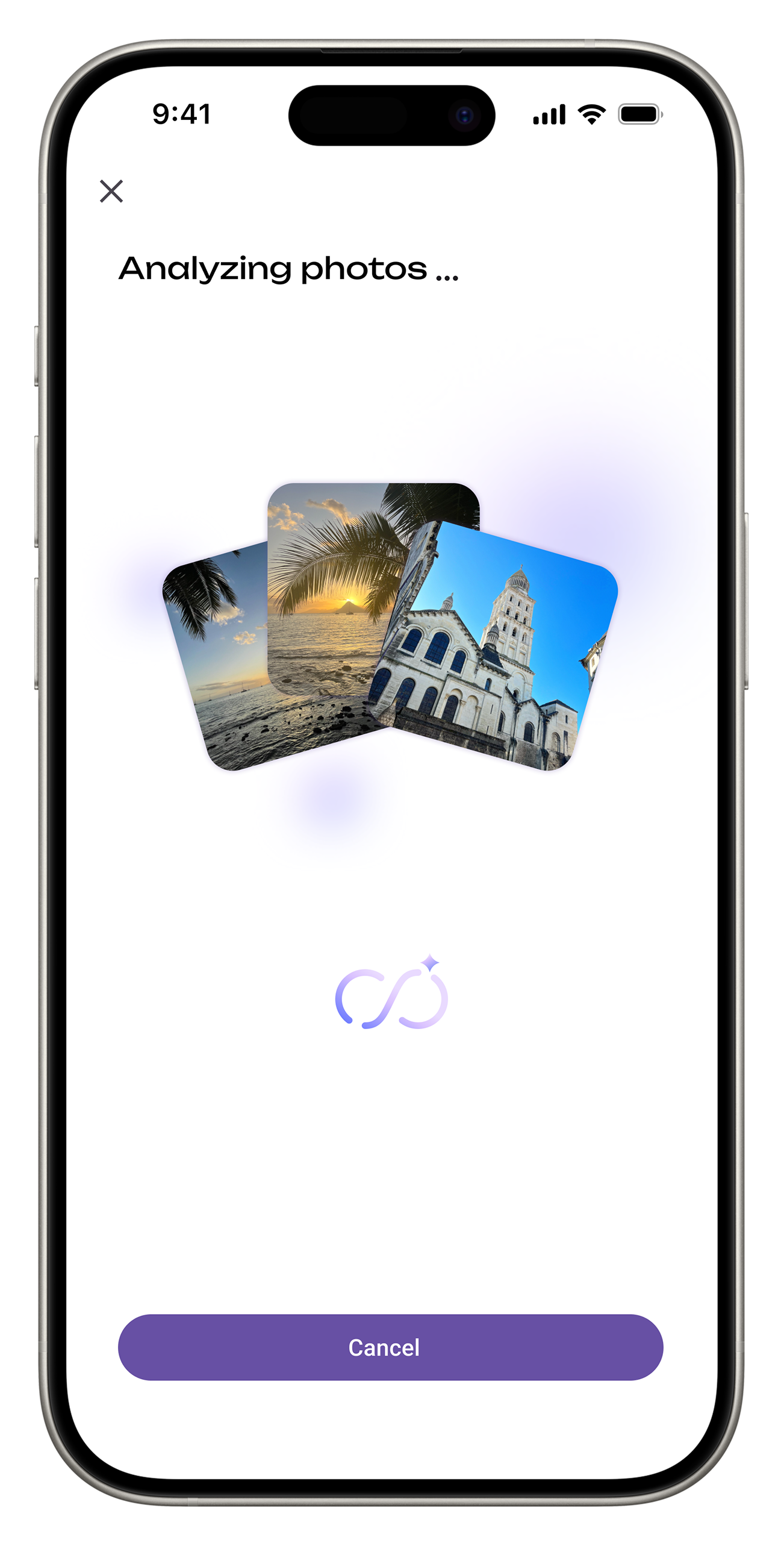
Our app suggests an initial trip draft with smart recommendations
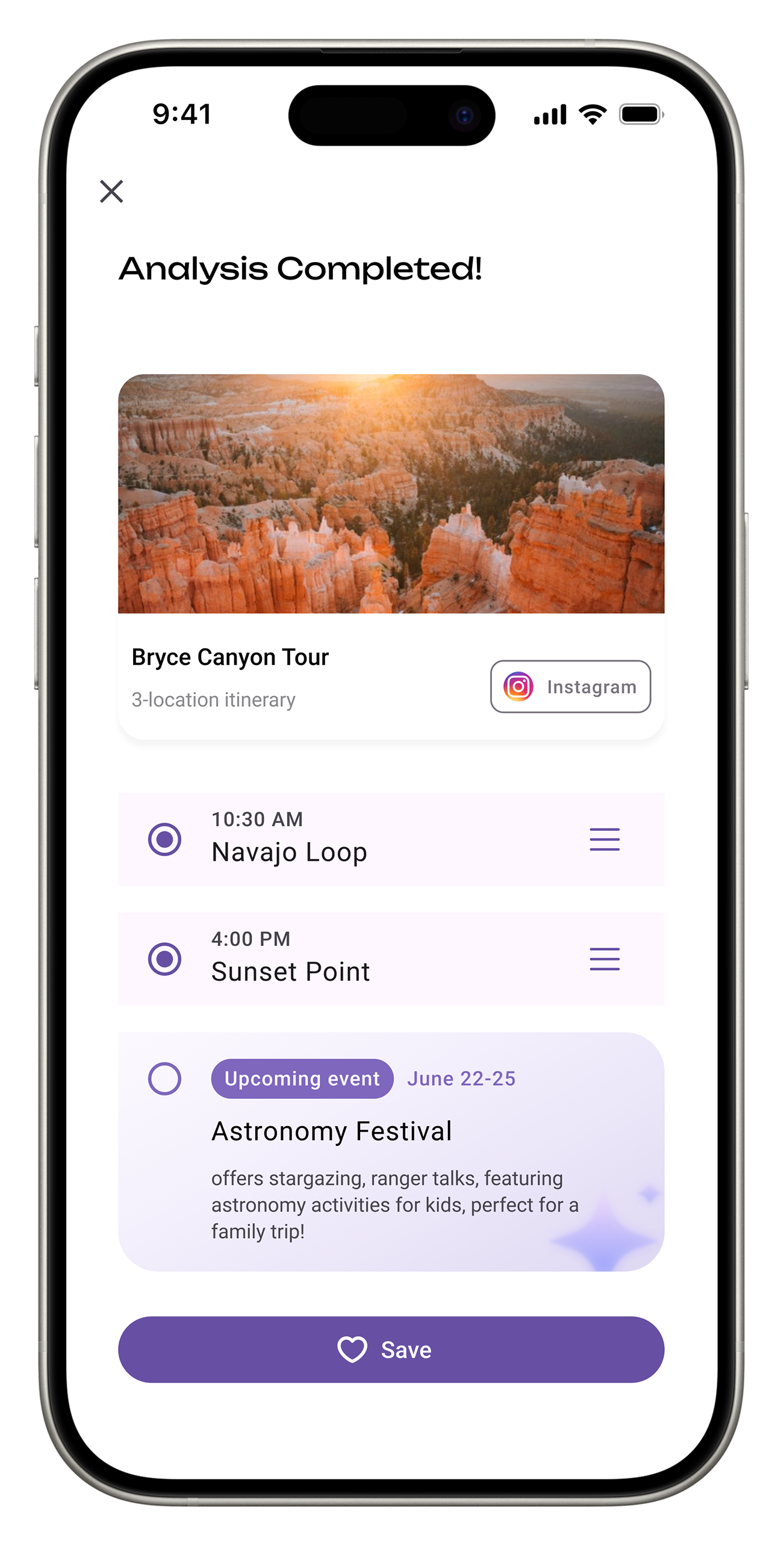
We explored multiple media types for content import, including videos and screenshots with smart location detection. However, for the MVP, we limited functionality to extracting location data from text links and photo metadata.
This feature is designed for both planners and spontaneous travelers, which automates itinerary creation while allowing easy customization—making trip planning effortless yet flexible.
Users input trip preferences—dates, cities, travel pace, and budget range
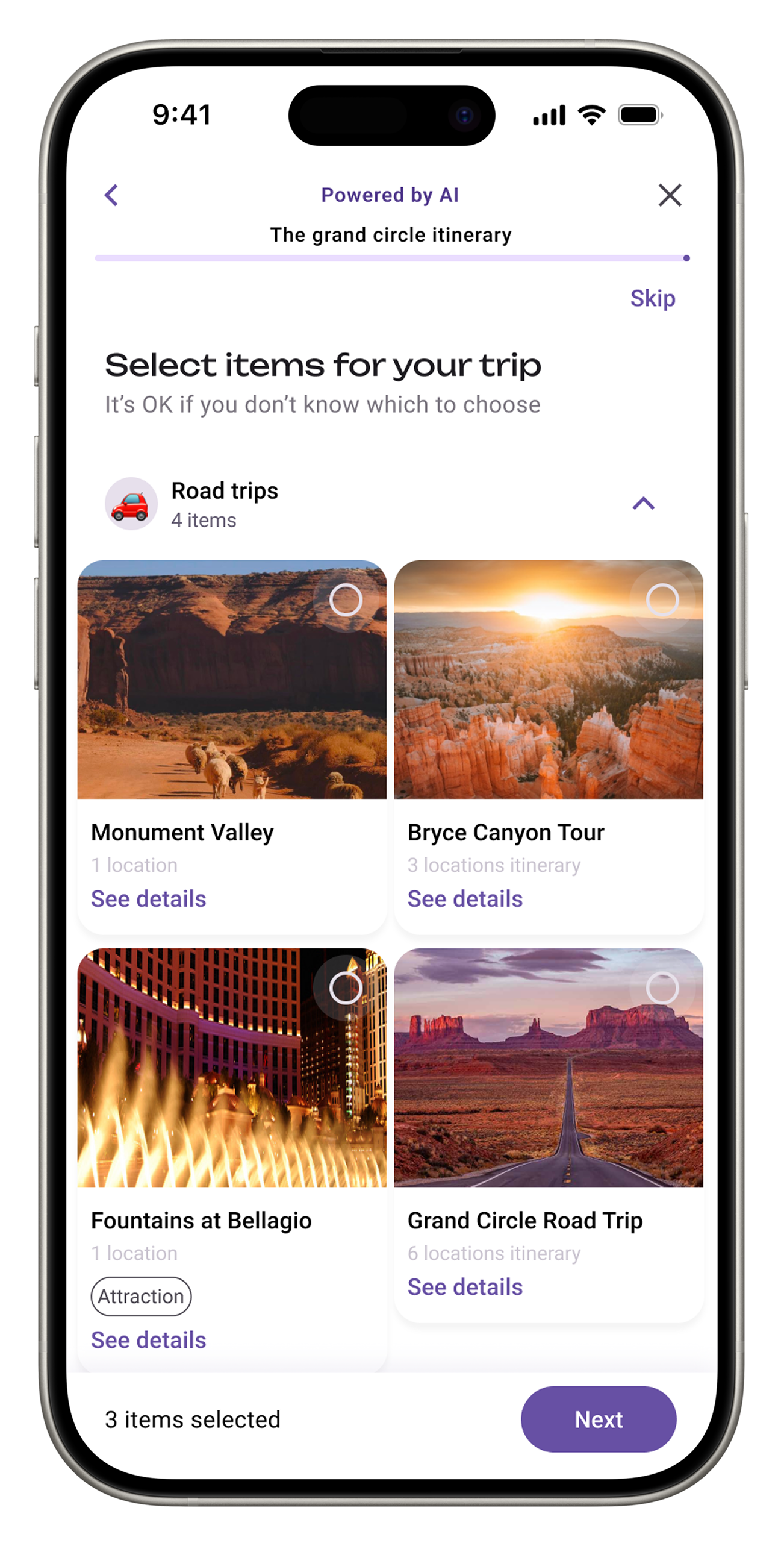
Three drafts are generated, each includes an overview and dropdown cards day-by-day
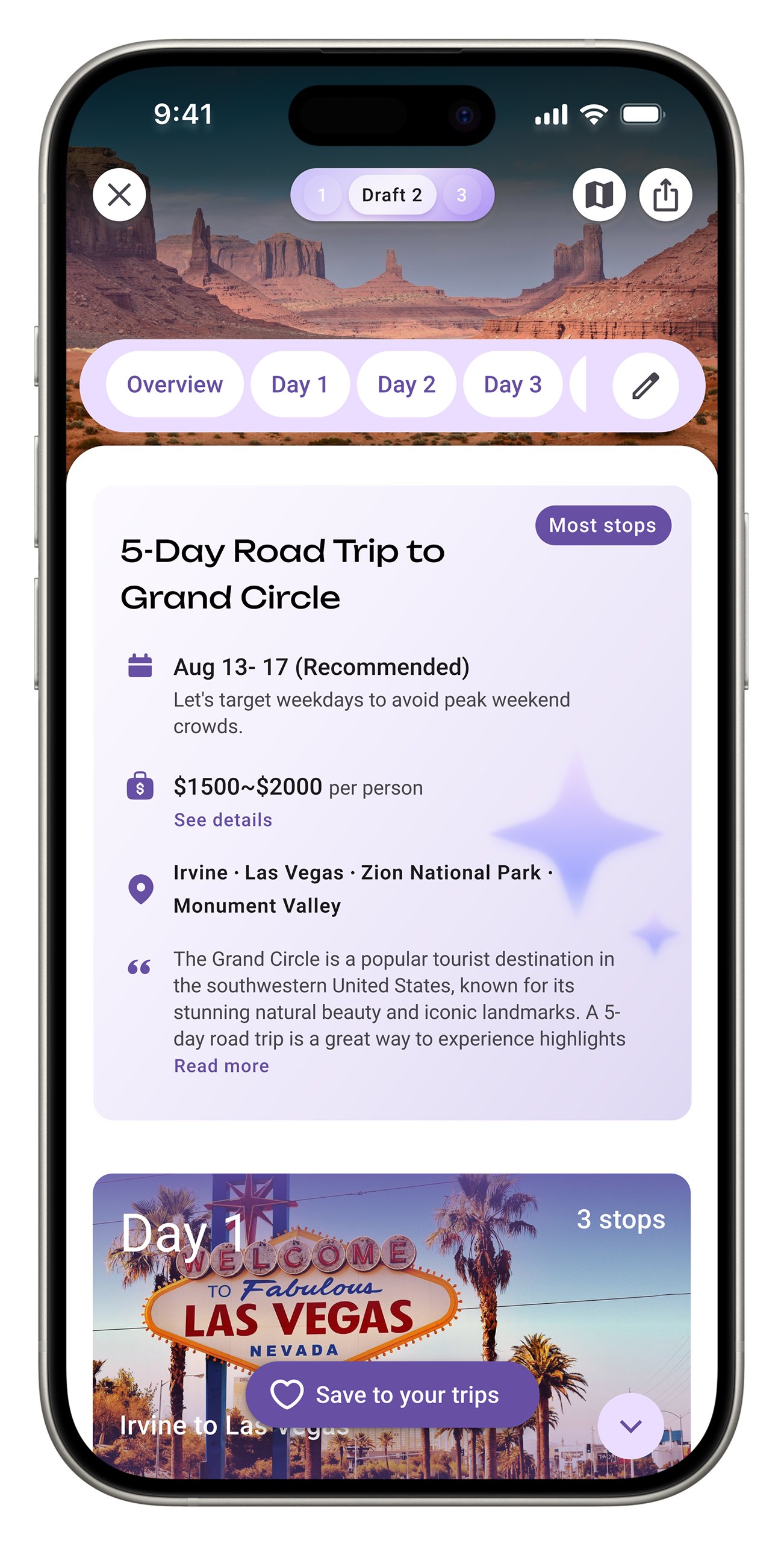
Users can view and adjust the full route (the order or locations) on a dynamic map

After several days of debugging, our working prototype still required around 2 minutes to generate a single itinerary, and each minor edit on the editing page triggered an additional 1-minute wait—making real-time interaction nearly impossible.
We scoped and built a complete MVP—from importing content and generating AI itineraries to editing routes on a map. But once the prototype was functioning, we ran into significant implementation issues.
And that’s when we paused—not out of failure, but out of clarity.
Each plan took ~2 minutes to generate and every edit triggered an additional ~1-minute delay
To make AI truly useful, we need to train it on user-generated data and feedback loops—wasn’t viable at this stage
To fix this required deeper infra and tighter LLM integration—might take several months to justify and test
We took a step back to evaluate the big picture.
—We weren’t solving a sharp pain point. We were trying to change a habit that didn’t need fixing.
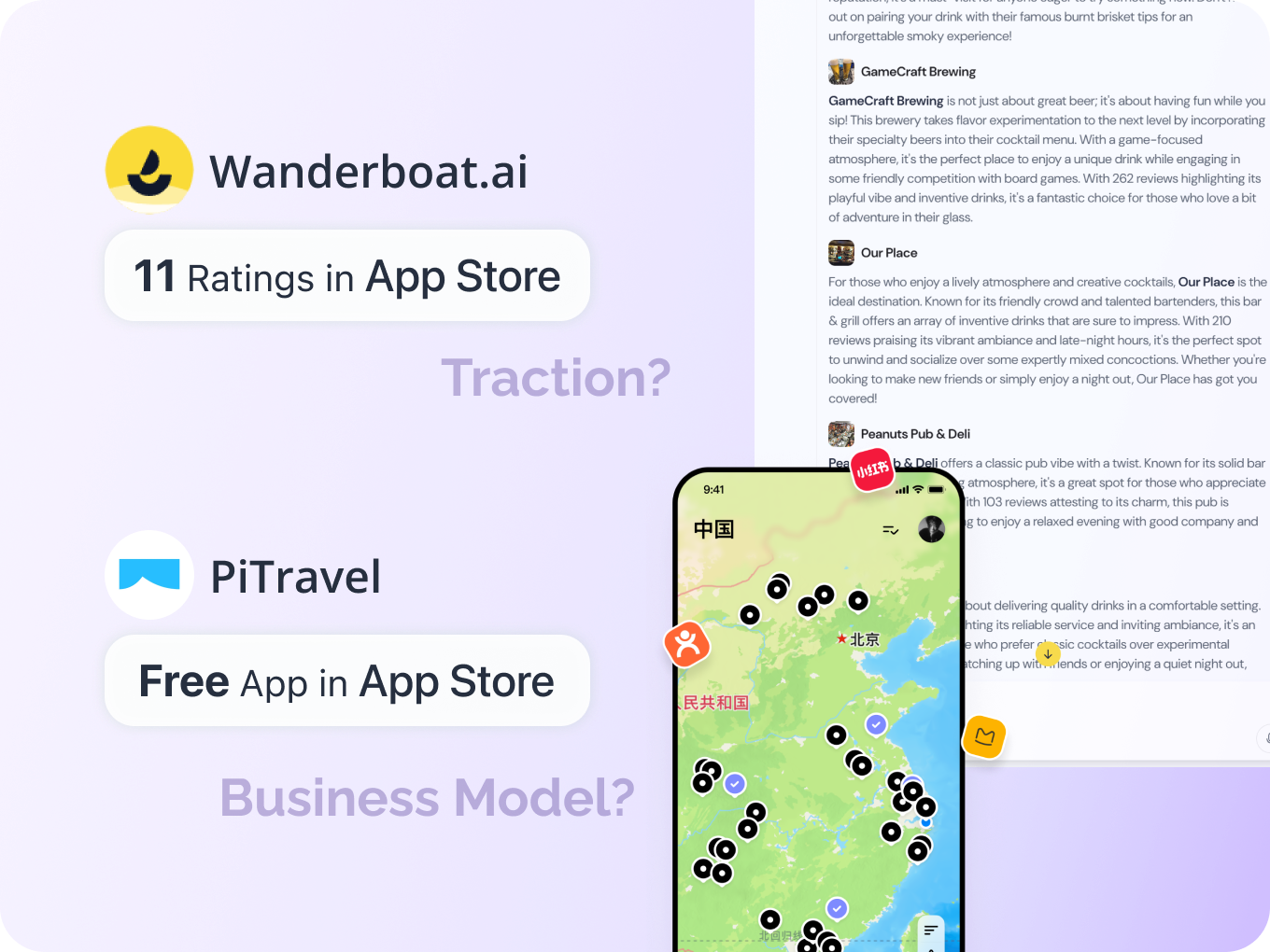
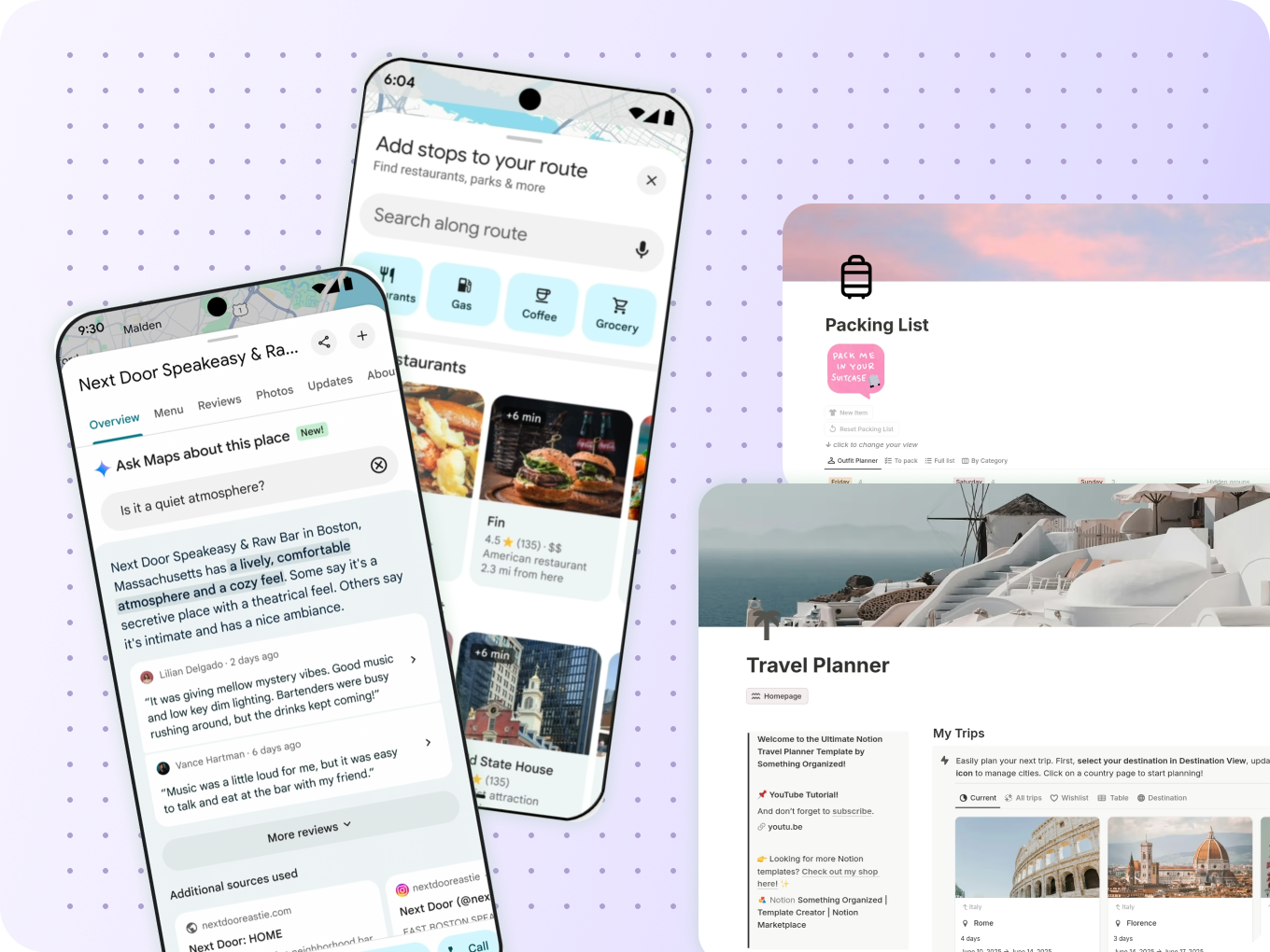
Startups Couldn't Find Product Market Fit
Pi Travel: A free AI travel planner app that runs plenty of ads—but in reality, we couldn’t find anyone who actually used it.
Wanderboat: Funded and beautifully branded, but with only 11 reviews on the App Store, its chat-based itinerary planning is hard to customize.
Users Are Comfortable With Tools They Have
Planners are used to multi-tool workflows—Google Maps + Docs + Notion + Spreadsheets
Spontaneous travelers save content from IG/ Tiktok, and rarely organize it afterward. With Gemini integrated into Google Maps, natural language queries are already natively supported
Alongside our MVP, we explored quick pivots based on investor feedback. These light experiments helped us better understand the edges of the opportunity space—and where not to build.
Cafe-First Discovery
Group Planning & Travel Partner Match
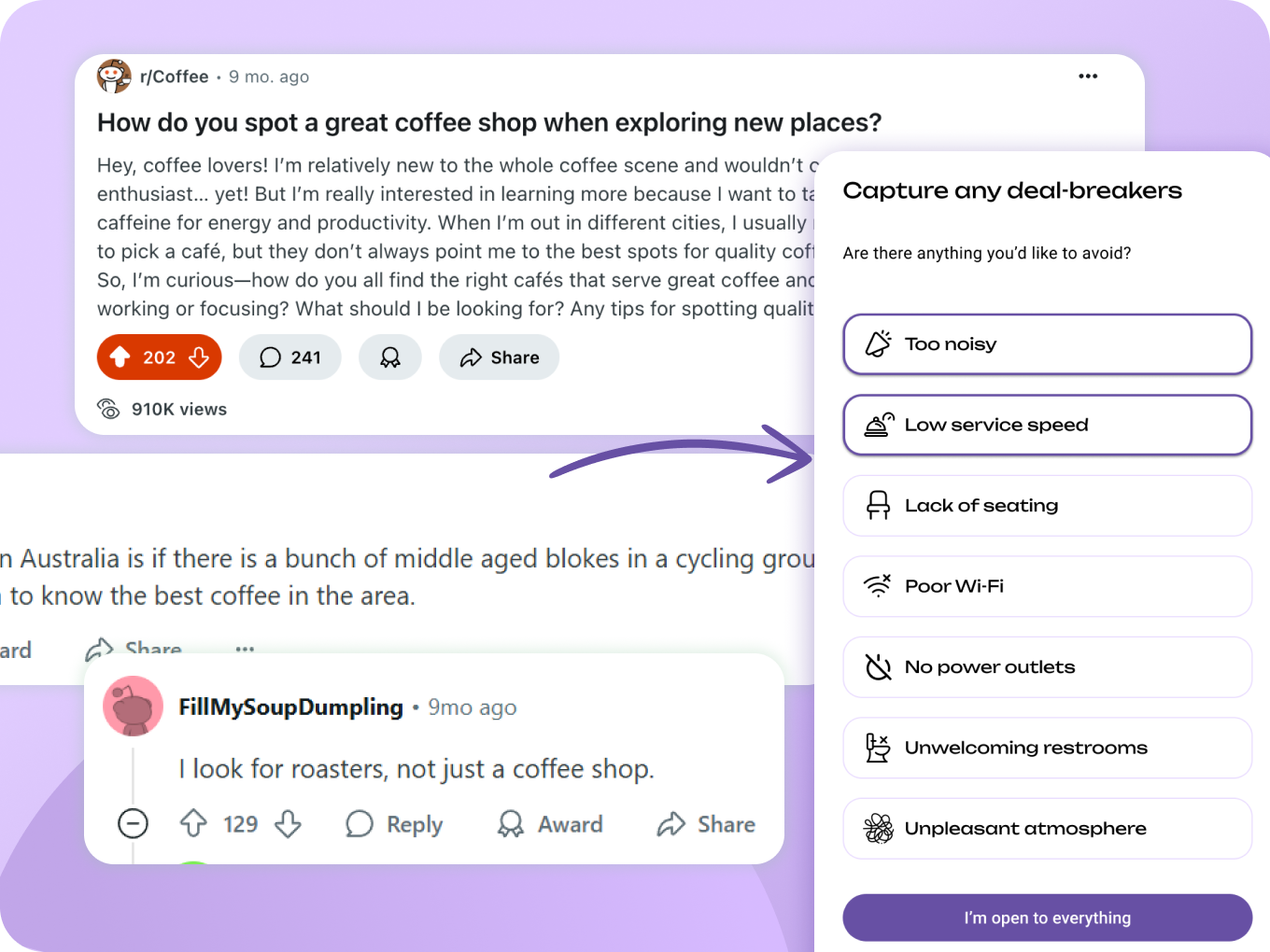
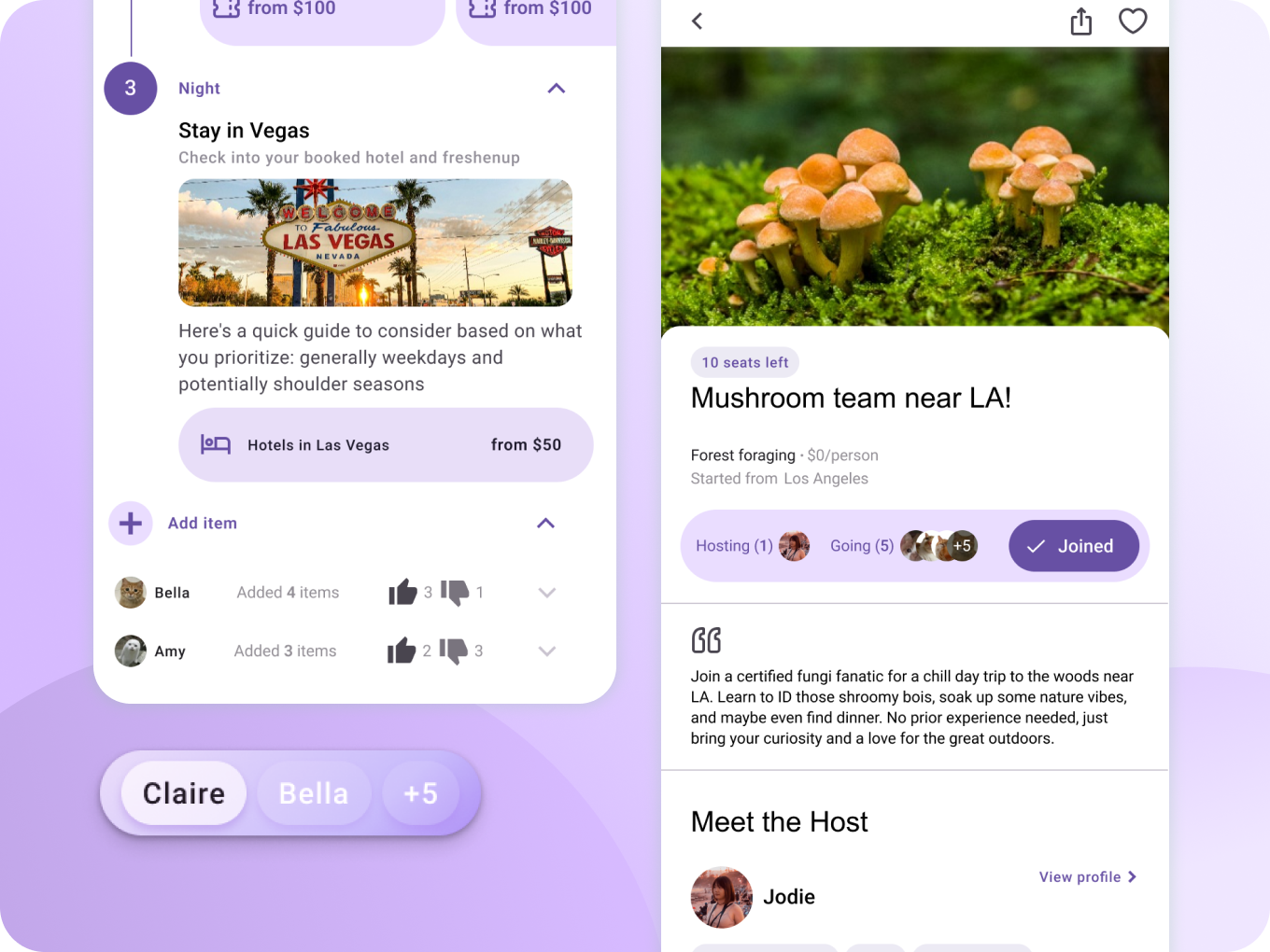
An investor suggested: “Great cafes cluster near attractions—start there.”
So we ran a qualitative Reddit post targeting coffee enthusiasts. Insights like “follow local cyclists” led us to design filters for a cafe discovery feature.
But it required heavy local content seeding and AI value was minimal so we decided not to scale it.
An investor expressed excitement about group coordination as a pain point in pitch interview
I quickly prototyped group itinerary editing & travel partner matching, which became our follow-up materials that helped us get funded.
But we excluded it from MVP due to high tech complexity and lower user priority.
See Reddit Post
Startups shouldn’t chase tarpit ideas — especially ones big tech is already positioned to solve.
As a product designer, I’ve realized instead of launching another travel app,the more practical way is to make Gemini a better travel companion by embedding it into tools users already rely on — Google Maps, Calendar, and Docs.
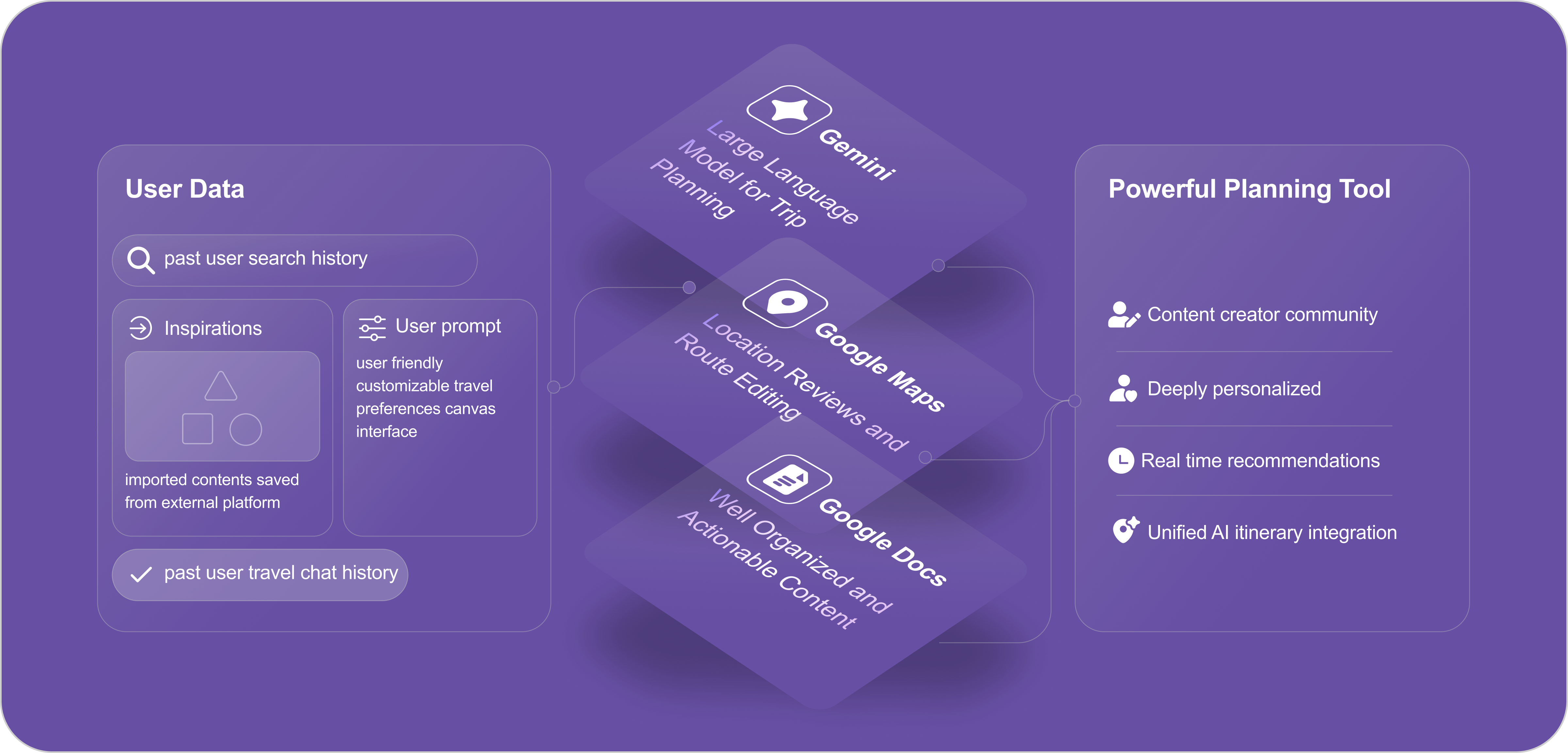
InfiniTrips wasn’t just about building an AI travel app — it was about learning when not to build further.
Through user testing, technical constraints, and market reality checks, I gained clarity on where AI truly adds value — and where it’s better to integrate than reinvent.
This project sharpened my product judgment, deepened my understanding of AI limitations, and reminded me that great design isn’t always about pushing forward — sometimes it’s about knowing when to pause and rethink.